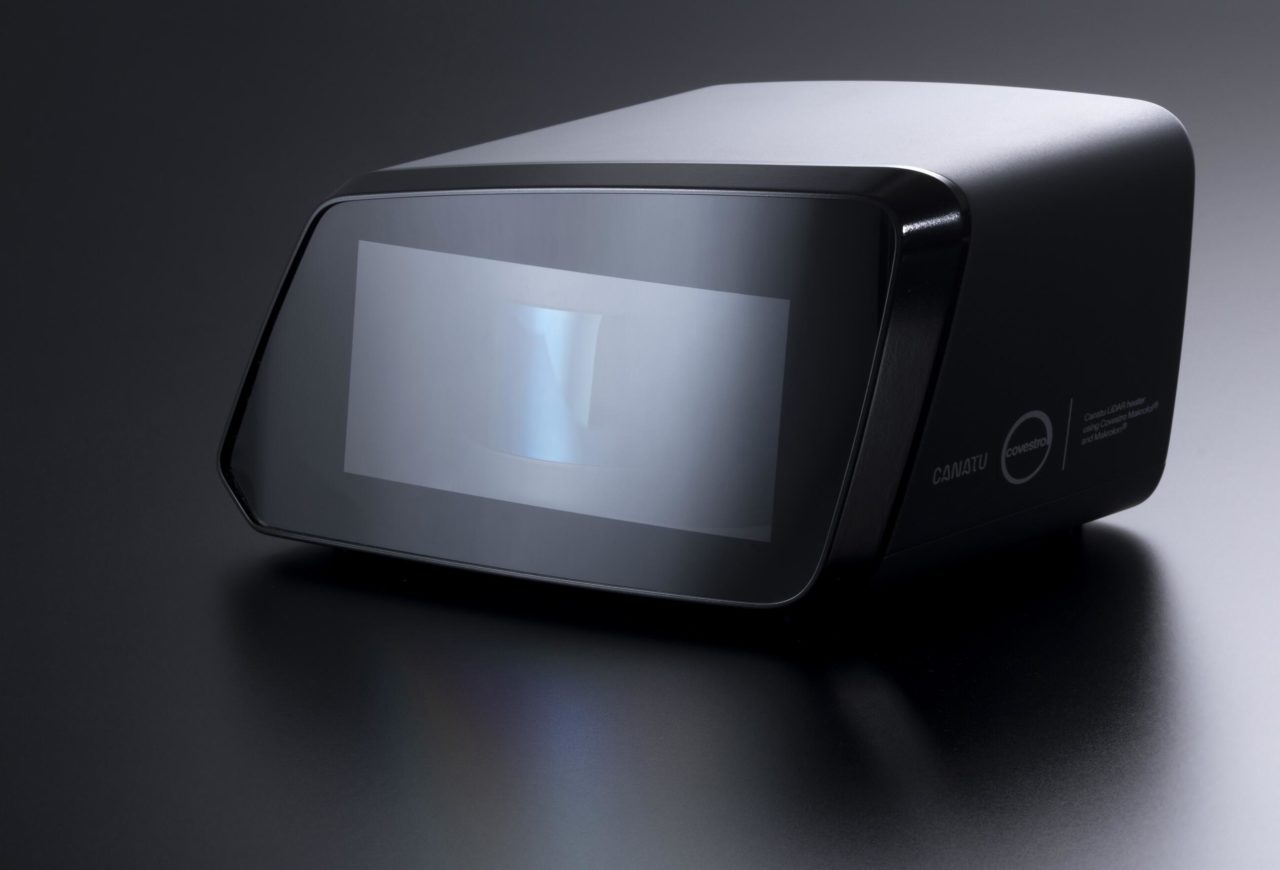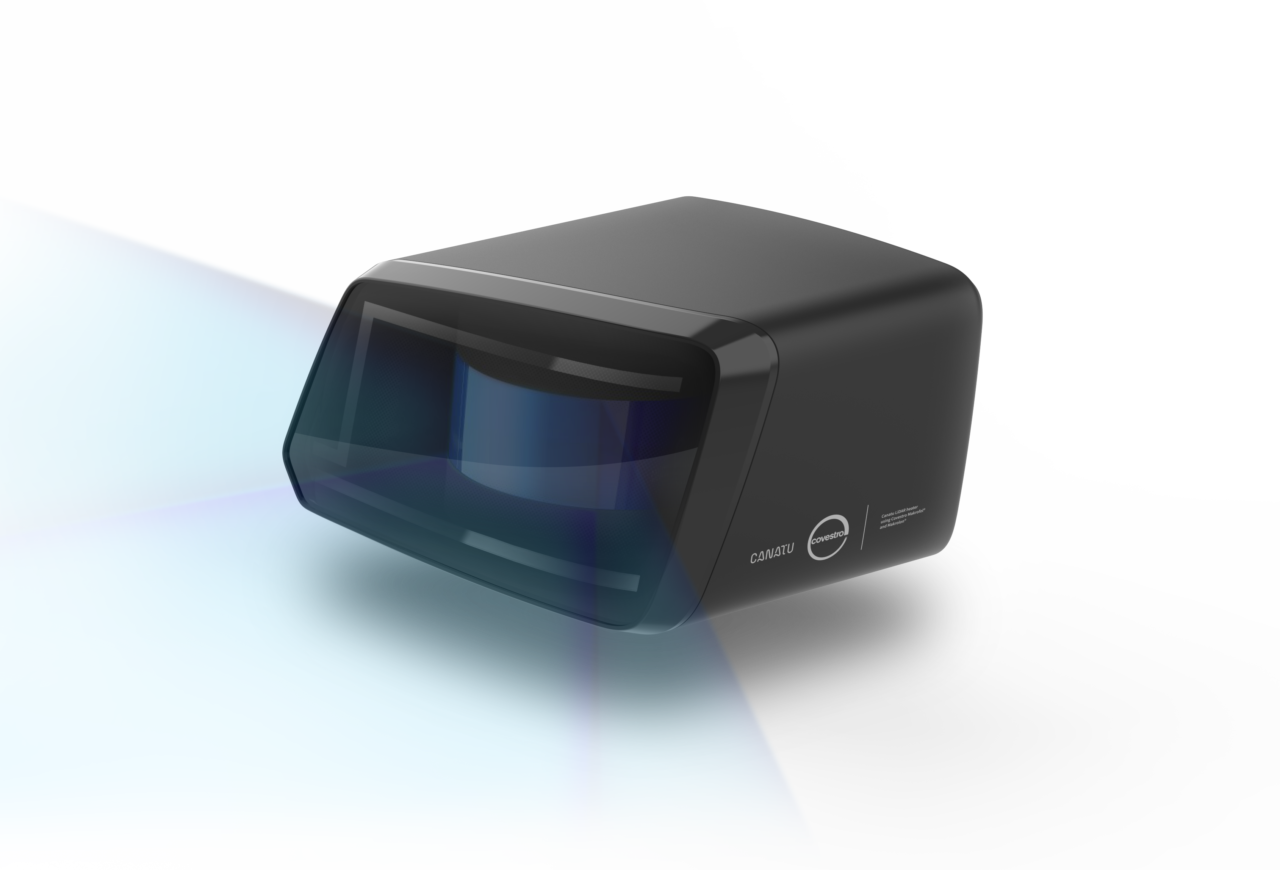Canatu film heaters for plastic components: frequently asked questions
How Canatu film heaters are integrated into the plastic components?
Canatu film heaters that are integrated into plastic parts are first fabricated on a polycarbonate (PC) substrate. These film heaters are then integrated into the plastic sensor cover by film insert molding (FIM), which is similar to industry-standard in-mold-labeling (IML).
During the process, the heater is first 3D formed and cut before being placed in an injection molding tool and injected with thermoplastic resin. Our film heater can be molded either on PC film side or on the heater side, and they are applicable also for more elaborate stacks including 2K FIM molding.
How can Canatu film heaters be connected electrically?
Our film heater needs to be connected to a voltage source. There are several ways to make a reliable and cost-efficient connector depending on customer needs.
A common example is a surface-mounted connector. In this case, typically a flexible printed circuit board (FPC) connector is mounted on the connector area of the heater, which is then connected to power circuitry. Surface mounting can be done before or after molding.
Another option is to use an in-mold connector. The connector is mounted onto the film heater before molding, which is then over-molded, ensuring a very robust and reliable solution.
What voltage levels can be used with Canatu film heaters?
The Canatu film heaters are passive resistive heaters that can be connected to a range of voltage levels. Typical input voltage ranges from 12 – 48 V.
Voltage is a key driver of heating performance, as power density increases exponentially with the second power of voltage. Higher voltages are often preferred especially in LiDAR where optical integrity is critical. Higher voltages allows using CNT film with very low absorption / high LiDAR transparency.
How is the power / temperature of Canatu film heaters controlled?
OEMs have different approaches to power control. Some implement temperature monitoring (e.g. thermistors) to monitor the actual temperature of the part. Some base their power management logic to heuristics including external temperature and vehicle speed.
Overall, the intention of the power control is to dynamically maximize heating performance when needed and minimize power consumption when heating is not needed.
Canatu film heaters do not by themselves provide temperature or power control. They are typically connected to a power circuit that include power management logic.
Do Canatu film heaters work with all LiDAR solutions?
Yes, Canatu film heaters work with all current automotive LiDAR solutions.
Currently, the automotive LiDARs operate in wavelengths between 900 – 1600 nm. The Canatu film heaters are LiDAR transparent and completely wire free, offering excellent optical and heating performance throughout this range. Our film heaters do not need to be optimized or tuned for particular wavelength range, so designing is very straightforward.
Which film types can Canatu CNT be fabricated on?
Canatu film heaters can be created on a wide variety of thin polymer films, including PC, PET, and others.
Why are anti-reflective (AR) coatings used in LiDAR solutions?
Anti-reflective coatings reduce optical reflections on the surface they are applied on. In LiDAR solutions, it’s critical to get as high optical power through the sensor cover lens (and back). Anti-reflective coatings can improve transmittance by several percentage points making them an important aspect when designing heated LiDAR sensor covers.
There are several ways to achieve AR-enhanced surfaces with Canatu film heaters. One option is applying an AR coating to the PC film before heater fabrication (with the heater on the opposite side of the AR coating). When the heater is subsequently molded on the CNT side, the exposed PC film surface has an AR coating (typically the B surface of the part). Another option is applying an AR coating to the molded part, with various solutions available for this process.
How is the heating performance defined and designed in Canatu film heaters?
The Canatu film heaters are always tailored to customer requirements. Customers often have heating performance requirements, such as maximum heating and potentially deicing time in specific ambient temperature.
For example, a requirement might be deicing a 0.5 mm ice layer in -20°C ambient temperature within 300 seconds.
Canatu has simulation tools that translate the heating requirements into power density (W/m2 ). We can then design the heater to achieve a unified power density at the required level.
Key design parameters for creating optimal heater include:
- Heater size and shape
- Heating requirements
- Available input voltage
- Optical requirements
Canatu’s design and simulation team takes the holistic customer requirements and designs and simulates the optimal heater. The results are reviewed with the customer prior to moving to heater prototyping.
Contact

Send us a message
Related content

LiDAR us vital for autonomous vehicles, but ice, snow and fog can obstruct the ranging sensors. Together with Covestro, we developed a LiDAR sensor cover lens with an integrated Canatu film heater. Learn more.

Canatu and Covestro have jointly developed a state-of-the-art LiDAR cover lens with heating functionality that is highly performant, versatile, and ready for scale-up. Learn more.

LiDAR is a key enabler of autonomous driving. Canatu film heaters keep LiDAR clear of ice, fog and snow, enabling autonomous driving in any weather. Learn more.

Canatu’s latest film heater developments enable LiDAR sensor reliability and autonomous driving in any weather. Learn more.